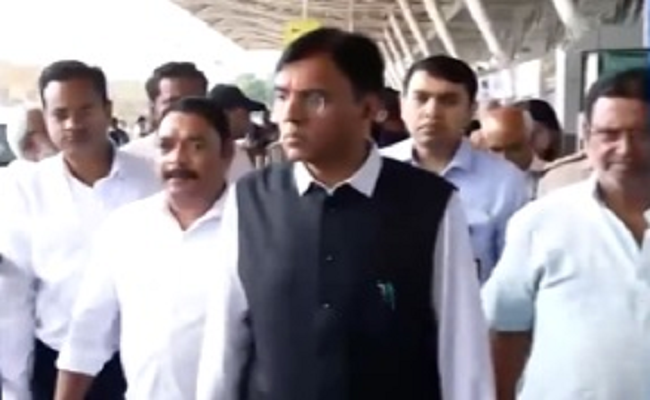.gif)
.gif)

In the aftermath of the devastating train accident in Odisha, Union Health Minister Dr Mansukh Mandaviya conducted a review meeting with senior doctors and officials of AIIMS Bhubaneswar.
The primary focus of the meeting was on the procedures related to embalming and the proper handing over of deceased bodies to their grieving family members.
In a swift response to the urgent medical needs arising from the train disaster, a team of medical professionals from AIIMS and other prominent Delhi hospitals was flown to Bhubaneswar on a special Indian Air Force flight. Equipped with essential medicines and heavy critical care equipment, the medical team aimed to provide immediate relief and medical assistance to those injured in the horrific incident.
Prior to this deployment, doctors from AIIMS-Bhubaneswar had already been sent to the towns of Balasore and Cuttack in Odisha to aid in the relief efforts at the accident site. Dr Mandaviya expressed his appreciation for their dedicated service and commitment.
The train collision, involving a goods train, the Shalimar-Chennai Central Coromandel Express, and the Bengaluru-Howrah Superfast Express, resulted in a tragic loss of at least 288 lives, with over 1,100 individuals sustaining injuries. The accident occurred near the Bahanaga Bazar station in Balasore, situated approximately 170 kilometers north of Bhubaneswar and 250 kilometers south of Kolkata.
The impact of the collision severely damaged and overturned 17 train carriages, leaving numerous passengers trapped. Preliminary investigations have indicated that the high speed of both passenger trains played a significant role in the high number of fatalities.
Eyewitnesses described the scene as a chaotic aftermath, with coaches piled upon one another and scattered across the ground. Disturbing images captured bloodied and deformed bodies, and severed body parts intertwined amidst the wreckage. Specialized equipment, including gas cutters and cranes, were employed to extricate the bodies from the mangled coaches.